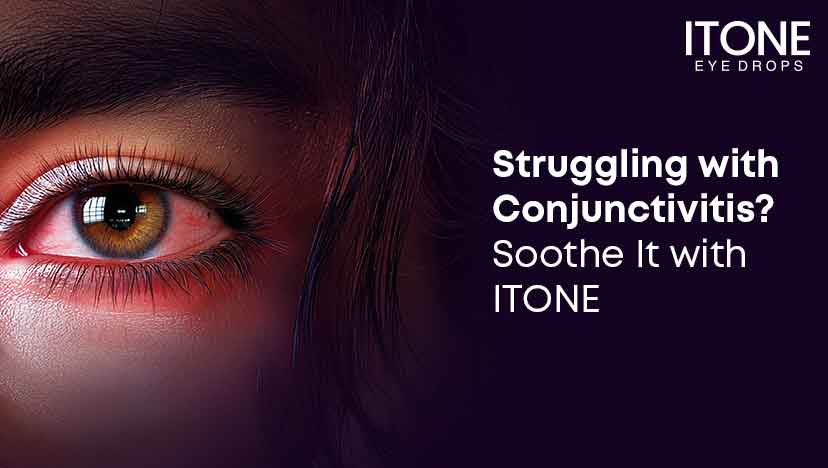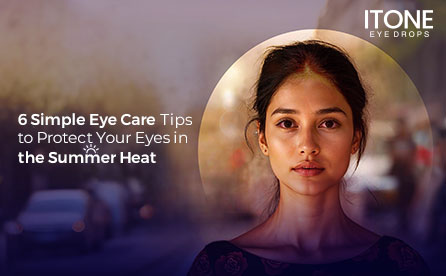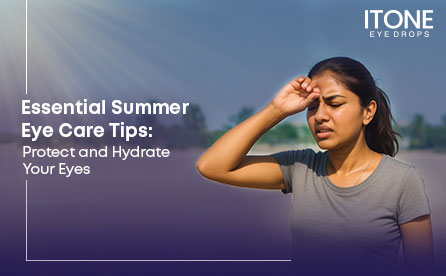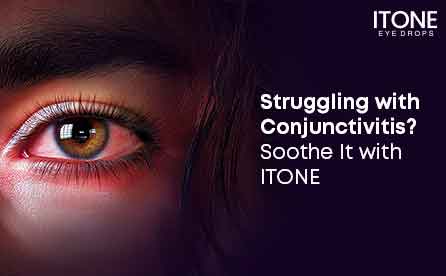
Struggling with Conjunctivitis? Soothe It with Itone Drops
Pink eye or conjunctivitis is a prevalent eye issue that is more prone to happen in summer because of pollutants and dust. The origin is often multifactorial, with viral, bacterial, or allergic in nature. Epidemiological data indicate a remarkable rise in seasonal conjunctivitis cases in summer, in accordance with high levels of dust, greater exposure to chlorinated swimming pools, and atmospheric pollutants (Kumar et al., 2022).
Effective management requires prompt treatment of conjunctival hyperemia, pruritus, lacrimation, and resolution of discharge. The conventional management is usually done in the form of antibiotic eye drops, but with an emerging trend towards the therapeutic use of herbal medicine for conjunctivitis management. In this context, the Itone eye drops have turned out to be a herbal remedy with an easy alternative for all who want to experience nature’s relief.
Key Ingredients and How Itone Herbal Eye Drops Work
Itone eye drops consist of an herbal blend of 19 medicinal plants such as Azadirachta indica (Neem), Ocimum sanctum (Tulsi), and Terminalia chebula (Haritaki). The extracts of these plants have demonstrated established antimicrobial, anti-inflammatory, and antioxidant properties:
- Neem has bactericidal activity against ocular pathogens that are prevalent (Singh et al., 2021).
- Tulsi modulates inflammatory cytokines and attenuates oxidative stress (Rao & Kaur, 2020).
- Haritaki facilitates mucosa healing and alleviates conjunctival oedema (Chatterjee et al., 2019).
Itone eye drops’ synergistic formulation has the capability of resolving the symptoms and rejuvenating the ocular surface in a short period of time. This makes it a potent medication among the eye drops for conjunctivitis.
How to Use Itone Eye Drops for Conjunctivitis Relief
- Wash hands thoroughly before application.
- Tilt your head back and slowly pull back the inferior eyelid.
- Instil 1–2 drops in each affected eye, 2–3 times a day.
- Prevent coming into contact with the dropper tip and surface.
- Keep in a dry, cool place, away from sunlight.
Preventive Recommendations
Along with pharmacologic management, preventive interventions are:
- Not making direct eye contact with polluters
- Using protective eyewear for outdoor pursuits
- Practising strict personal cleanliness to reduce the transmission of infection
The addition of herbal Itone eye drops as a preventive treatment in the summer months of high risk can enhance ocular health outcomes and reduce dependence on conventional eye drops for pink eyes.
Conclusion
The incidence of conjunctivitis rises in summer due to environmental and microbial factors. Conventional therapy, though effective, has side effects and risks. Itone eye drops, derived from Ayurvedic concept, is a promising adjunct or alternative therapy with antimicrobial, anti-inflammatory, and antioxidant action to manage conjunctivitis symptomatically well. Their value as good eye drops during summer and eye drops for pink eye renders them a valuable option for the maintenance of ocular health during unfavourable seasonal conditions.
FAQs
Q. Is Conjunctivitis Common During Summer?
Conjunctivitis is actually more common in the summer. People spend more time outside in swimming pools during this time. This increases exposure to allergens like pollen, and heat promotes the growth of bacteria and viruses, which causes conjunctivitis in the first place.
Q. Can You Go Out in Sunlight with Conjunctivitis?
Do not rub or touch the conjunctivitis eyes with towels, makeup, or fingers, and don’t swim. Do not expose yourself directly to bright light and allergens. Do not use contact lenses until further advice is given or otherwise directed. Observe hygiene to prevent spreading, and keep away from close contact with others if it is infectious.







